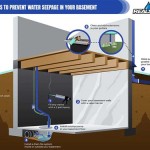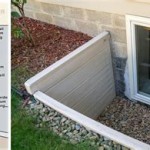How to Install a Sump Pump in Your Basement: A Comprehensive Guide
Basements are prone to flooding, especially during heavy rainfall. To prevent water damage and keep your basement dry, a sump pump is an essential investment. Here is a comprehensive guide on how to install a sump pump in your basement:
1. Choose the Right Sump Pump
Sump pumps come in various sizes and capacities. Determine the correct size for your basement by calculating the square footage and considering the potential amount of water that may enter. Electric, battery-powered, and manual sump pumps are available; choose the one that suits your needs.
2. Determine the Location
Place the sump pump in the lowest point of your basement, typically in the center. This location ensures that water will drain towards the pump during flooding.
3. Dig the Sump Pit
Use a shovel to dig a hole approximately 18-24 inches deep and 18 inches wide. The pit should be large enough to accommodate the sump pump and allow for enough space for water to collect.
4. Place the Sump Pump
Set the sump pump in the pit and ensure it is level. Connect the discharge pipe to the pump's outlet and ensure it drains away from your basement.
5. Add Gravel
Fill the bottom of the sump pit with a layer of gravel about 6 inches thick. This layer will help filter water and prevent sediment from clogging the pump.
6. Backfill the Sump Pit
Fill the remaining space around the sump pump with dirt or sand. Compact the backfill to secure the pump in place.
7. Connect the Power
Connect the sump pump's power cord to a dedicated circuit breaker or outlet. Ensure the electrical connections are secure and meet local building codes.
8. Test the Sump Pump
Pour water into the sump pit to test the pump's operation. The pump should activate and start pumping water out of the pit. Check the discharge line for any leaks or blockages.
9. Install a Backup System
Consider installing a battery-powered backup sump pump in case of power outages. This will ensure that your basement remains protected even if the main pump fails.
10. Maintain the Sump Pump
Regularly check the sump pump and clean the sump pit to prevent clogging and ensure optimal performance. Replace the pump every 5-10 years or as recommended by the manufacturer.
Additional Tips:
- Use a sump pump alarm to alert you of potential flooding or pump malfunctions.
- Install a check valve on the discharge line to prevent water from backflowing into the basement.
- Place the sump pump on a pedestal or platform to elevate it above the waterline in case of severe flooding.

Diy Sump Pump Install Your Own Smd Fluid Controls

Diy Sump Pump Install Your Own Smd Fluid Controls

Sump Pump Installation In Minneapolis Paul Bunyan

Tips For Installing Sump Pumps 2024 10 17 Plumbing And Mechanical

Sump Pump Installs In Portland Bangor Rochester Maine Six Steps To Installing A System Me

Basement Sump Pump Sedona Waterproofing Solutions

How To Install A Sump Pump

Sump Pump Installation In Pa De Dry Tech Waterproofing Solutions

Sump Pump Installation How To Install A Homeserve Usa

Sump Pump Installs In Portland Bangor Rochester Maine Six Steps To Installing A System Me
See Also








